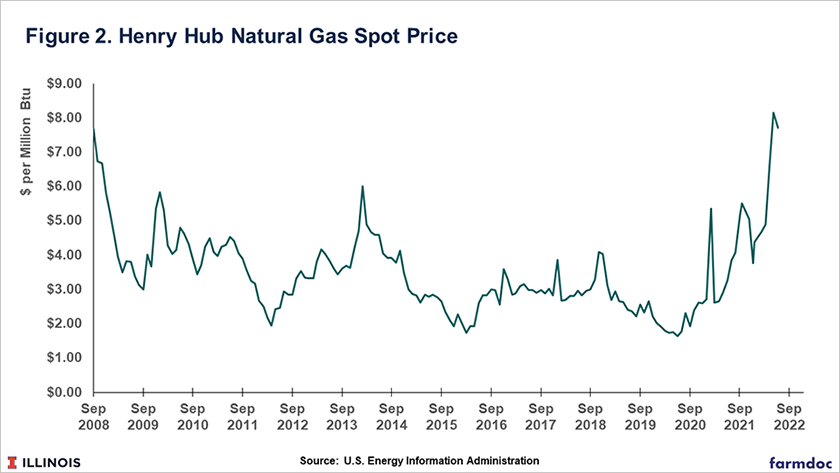3 Strategies to Manage Around High Fertilizer Prices

Even though fertilizer prices have softened from the record highs seen earlier this year, they are still at historic levels. Last year, farmers who bought nitrogen fertilizer early received lower prices. Will the same pattern play out this year?
In August 2021, the anhydrous ammonia price averaged $749. In November 2021, the average price was $1,274, or $526 higher than the August price, as detailed in a recent farmdoc Daily piece: Nitrogen Fertilizer Outlook for 2023 Decisions.
“The last time we saw in anhydrous ammonia prices above $1,000 was back in 2008 in the financial crisis,” says Gary Schnitkey, University of Illinois Extension ag economist.
Fertilizer Market Factors Outlook
“As we move forward and look at our outlook for fertilizer prices, it's going to be very much dependent on geopolitical events,” Schnitkey says. “Western Europe is trying to reduce its flow of natural gas from Russia and Russia is threatening to cut off supplies to Germany and Western Europe. If that happens, we will at the very least see ammonia prices and nitrogen fertilizer prices from Europe being much higher than those produced in North and South America.”
Recession worries and realities could also weigh heaving on prices.
Similarly, he says, China is a major fertilizer producer and exporter. It could impose restrictions on fertilizer exports.
Overall, the two major factors that are associated with anhydrous ammonia prices in the U.S. are natural gas prices and corn prices. As a major cost in nitrogen fertilizer production, increases in natural gas prices tend to increase nitrogen fertilizer prices, Schnitkey says.
In recent months, the natural gas price at Henry Hub has increased, reaching a monthly average of $8.14 per million BTUs in May and $7.70 in June. These prices are well above recent averages (see Figure 2). The last time prices were at these levels was in 2008.

Corn prices have remained relatively robust this year, even if they have recently slid lower. As such, Schnitkey says, current corn prices point to relatively high nitrogen fertilizer prices but a continued falling price for corn could point to the potential for further declines in nitrogen fertilizer price.
Should You Buy Now?
In 2021-2022, anhydrous ammonia prices rose substantially, reaching changes of over $800 per ton relative to August 2021. On the other hand, the year 2008-2009 saw substantial declines relative to August 2008. In 2008 we had a financial crisis, and ammonia prices began the year at $1,150 per ton. From those levels, fertilizer prices fell by more than $500 by May 2009.
“Do I expect fertilizer prices to drop? No,” says Bret Oelke, farm management coach with Innovus Agra. “Your choice is to book and lock it down now or take the chance it will go up. There’s no real downside.”
Determining your price outlook is a good first step. Beyond that, Schnitkey offers these tips:
- If you purchase fertilizer, price corn. Look at pricing at least a portion of corn production to cover costs. “If we are going to purchase nitrogen in August and September, it would be good from a risk management standpoint to price some of the corn,” he says. “Anhydrous ammonia prices and corn prices are correlated, so if we’re purchasing nitrogen now and the price of nitrogen declines, it's likely the corn prices have declined as well.”
- Considering splitting your nitrogen fertilizer applications. Then you price at different points in the year and may have a better overall average cost.
- Take a look at PACE. If you plan any post-planting nitrogen application, you can mitigate risks by purchasing Post Application Coverage Endorsement (PACE), Schnitkey says. It is a crop insurance product that compensates for losses when nitrogen cannot be applied after planting.
Watch this video with Gary Schnitkey, University of Illinois ag economist:







